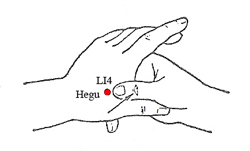
The discomfort aside, morning sickness has been the basis of predicting the outcome of a pregnancy for many years. It has been a held belief that the sex of the baby is linked to the severity of the morning sickness. Old wives tales predict that the sicker the mother is, the more likely she is to get a girl; but, this is not an absolute rule. Some women have believed that they will have girls because of severe morning sickness and end up having boys. Then, what if there is no morning sickness?
No Morning Sickness, Boy or Girl?
It is a common belief that if a mother does not have nausea in the early stages of pregnancy, she is likely to have a boy. Well, this is not set in stone and has misled many women before. Scientifically, severe morning sickness is linked with a girl pregnancy. Hormones produced during a girl pregnancy are likely to make the mom more nauseated. A study conducted in Sweden showed that women who were admitted for severe morning sickness had a 55% chance of delivering a girl. However, the study focused on women with hyper emesis gravidarum and it is hard to relate the findings with women who have normal morning sickness. So, before you jump and go buy all blue baby clothes just because you do not have morning sickness, it is good to take a breath and wait for an ultrasound after 20 weeks of pregnancy. This is a more definite way of determining the sex of the baby. You do not want to be left with a pile of clothes and necessities that are inappropriate for the child you are expecting.
The video below expounds more on the relationship between morning sickness and the sex of the baby from a doctor’s point of view:
Are There Any Other Ways to Predict Your Baby’s Gender?
Various ways to predict the sex of the baby have been passed down from mothers to daughters. There is no scientific backing to most of the methods listed below, but they have come true for some women, so why not take a look and it might suit your case.
1. Bump Position
Someone can predict the sex of your baby form the position and shape of your baby bump. If the bump is low and out front, it is a boy. If the bump is high, it is more likely to be a girl. This is fun, but science contradicts the belief by basing the shape of the bump on the nature and tone of the mother’s abdominal muscles.
2. Your Appearance
Apparently changes on the face can indicate the sex of the baby. Contrary to what would be expected, boys confer shiny hair and rosy skin while girls leave a mother with lusterless dull hair and pimples. Science disreputes this by attributing the skin changes to the shift in body hormones.
3. More Calories
Women have a love-hate relationship with calories. There are few instances when extra calories intake provides benefit to the body. Some study results have shown that women who take extra calories are more likely to conceive boys. But the real fact is still not known yet.
4. Cravings
Pregnancy is associated with its fair share of weird cravings. Developing a sweet tooth is an indicator of a girl on the way while craving salty foods is often associated with a boy pregnancy. This has no scientific basis.
5. Heartbeat
For fun, measure the heartbeat of your unborn child. Old wives tales stipulate that a heartbeat of less than 140 predicts a boy pregnancy while above that, it is a girl pregnancy.
6. Fetal Movement
Apparently, boys are energetic even before they are born. Increased fetal activity is highly predictive of a boy pregnancy. However, it is important to note that baby movements correspond to the maternal level of physical activity. A mom engaged in activity all day is likely to experience decreased fetal movements compared to a mum who has been taking it easy.
7. Chinese Calendar
At random, pick any country and you will definitely come across various fables used to predict the sex of a baby. The methods are native to the people of that specific country. One of the most popular ones is the Chinese calculator. It takes the mother’s age at conception and adds to the number of the month she conceived. If the result is an odd number, it is a boy; if an even number, it is a girl.
More Reliable Methods to Find out Your Baby’s Gender
|
Methods |
Description |
|
Ultrasound |
After 20 weeks of pregnancy, an ultrasound is a fairly accurate way of determining the sex of the baby. In early pregnancy, the genitals of both boys and girls are similar and differentiation at this point is hard to tell. After 20 weeks, the genitals are well differentiated and the sex of the baby can be determined once the genitals are visualized during the exam. |
|
Genetic test |
Genetic tests have success rates of up to 99% in determining the sex of the baby. Examples include chorionic villus sampling (CVS) and amniocentesis. These are not routine tests and are ordered when the doctor wants to investigate for a chromosomal abnormality such as Down syndrome in the unborn baby. |
|
Blood test |
A simple blood test can be used to determine the sex of the baby. It is highly accurate and can be performed, even in the early stage of pregnancy. The mother’s blood sample is collected and it is analyzed to see if there are traces of the sex male chromosome. |






